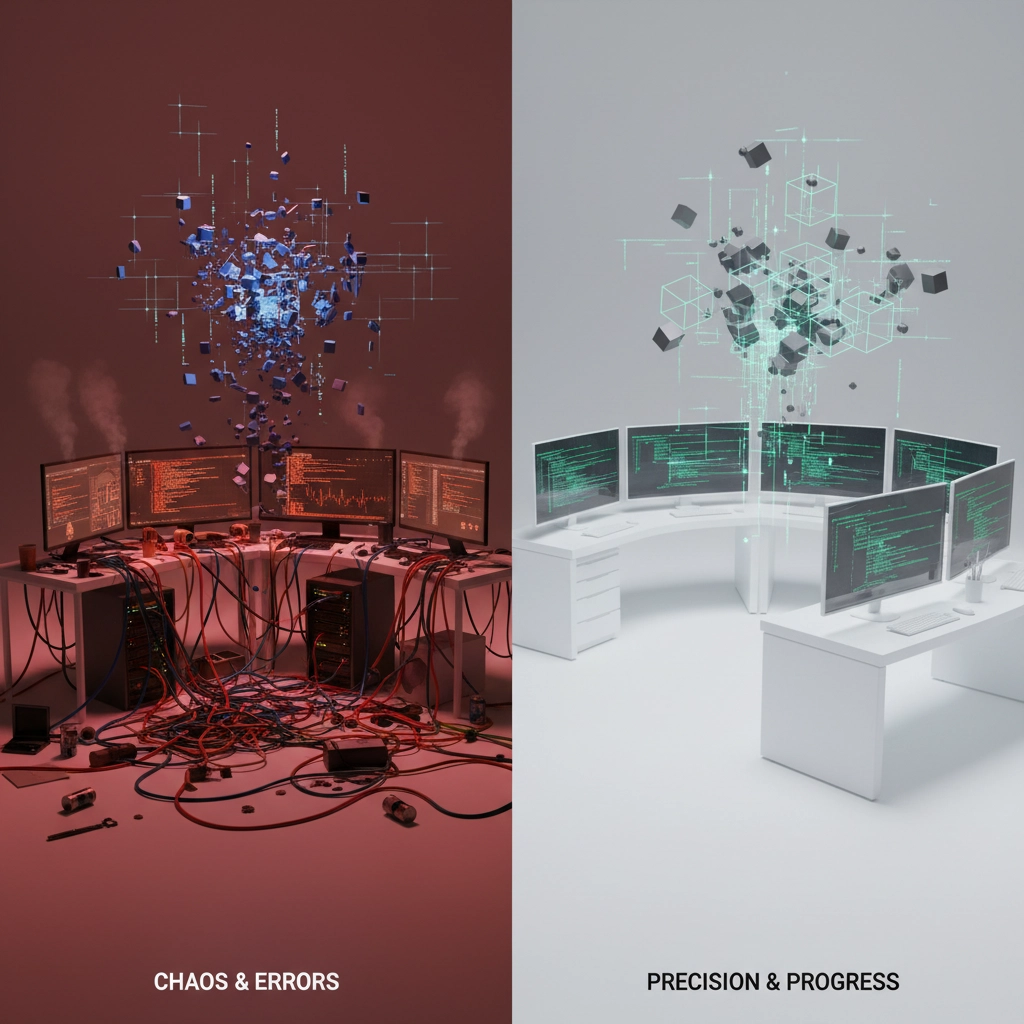The AI gold rush is here, and everyone wants a piece of the action. But when OpenAI's valuation swings wildly from $97 billion to $300 billion depending on which investor you ask, it's clear we have a problem. Traditional startup evaluation methods are breaking down in the face of AI's unique dynamics, leaving investors vulnerable to spectacular losses.
As venture capitalists, we're navigating uncharted territory where yesterday's breakthrough model can become tomorrow's obsolete technology overnight. The stakes are higher, the pace is faster, and the old playbooks simply don't apply. Here's how to separate the genuine AI opportunities from the hype-driven valuations that could burn your portfolio.
The Fundamental Problem with AI Valuations
Unlike traditional software companies with sticky customer bases and predictable revenue streams, AI startups face what experts call the "zero value threshold." This is the point where cutting-edge technology becomes worthless as new capabilities emerge. Think about it: customers can switch between AI providers with minimal friction, and the constant threat of technological obsolescence looms large.

The exponential pace of AI development creates unprecedented displacement risk. A model that dominates benchmarks today might be surpassed by a competitor's release next month. This reality makes conventional valuation methods like revenue multiples and discounted cash flow models inadequate for capturing AI's true risk profile.
VCs across the industry acknowledge that current AI startup valuations "appear nonsensical," yet most continue relying on traditional metrics because they lack systematic alternatives. The result? A market where technical excellence becomes secondary to fundraising prowess, and genuine innovation gets lost in the noise.
Building a Technical Framework for AI Due Diligence
Foundation Model Assessment
When evaluating AI startups, technical performance benchmarks must carry equal weight with financial metrics. Focus on model performance across standardized benchmarks, training efficiency metrics, and the company's ability to maintain competitive advantages as the field advances.
But here's the critical question: How quickly can this company's technical moat erode? In traditional tech, competitive advantages might last years or even decades. In AI, that timeline compresses to months or quarters. Your evaluation framework must account for this accelerated obsolescence cycle.
Intellectual Property Deep Dive
AI startups often derive value from proprietary algorithms and unique datasets. But not all IP is created equal. Evaluate whether the startup's competitive advantages stem from truly proprietary technology or merely first-mover benefits that competitors can quickly replicate.
Look for companies with defensible data advantages – unique datasets that would be difficult or impossible for competitors to recreate. A startup training on proprietary sensor data from industrial equipment has a stronger moat than one relying on publicly available internet data, no matter how sophisticated their algorithms.

Risk-Adjusted Evaluation Criteria
Team Quality as Primary Differentiator
In the AI space, talent quality represents perhaps the most crucial valuation factor. The difference between a world-class AI team and a competent one can determine whether a startup stays ahead of the zero value threshold or gets swept away by the next wave of innovation.
Assess the team's ability to innovate continuously and adapt to rapidly changing technological landscapes. Look for track records of shipping breakthrough AI products, not just publishing research papers. The experience of navigating fast-moving AI development cycles directly impacts execution risk and long-term viability.
Market Position and Defensibility
Traditional market analysis falls short when applied to AI startups. Instead of just analyzing total addressable market, focus on specific segments where the startup can build sustainable competitive advantages. Enterprise-focused AI companies often have more defensible positions than consumer applications due to integration complexity and switching costs.
But even enterprise customers may migrate to superior AI solutions more readily than they would replace traditional software. Evaluate whether the business model can withstand this unique pressure, and look for companies building platform effects or network advantages that compound over time.
Practical Valuation Approaches That Work
Scenario-Based Modeling
Apply multiple scenario modeling to account for AI's extreme outcome distribution. Model optimistic scenarios where the startup achieves technical breakthroughs alongside pessimistic scenarios where competitors rapidly surpass their capabilities.
This approach provides a more comprehensive valuation range that acknowledges AI's binary outcomes – either massive success or rapid obsolescence, with little middle ground. Use sensitivity analysis to understand how changes in key technical assumptions impact valuations.

Comparative Analysis with Heavy Adjustments
When using comparable company analysis, apply significant downward adjustments for AI-specific risks that traditional multiples don't capture. Recent AI deal multiples likely reflect market exuberance rather than sustainable value creation, especially for companies without clear competitive moats.
Focus on comparables with similar technical risk profiles rather than just revenue or market similarities. A computer vision startup has more in common with other perception-based AI companies than with traditional software companies in adjacent markets.
Red Flags to Avoid
Valuation Inflation Signals
Be wary of startups that emphasize fundraising milestones over technical achievements. Companies that spend more time crafting fundraising narratives than building breakthrough products often represent poor investment opportunities, regardless of their current valuations.
Watch for startups claiming revolutionary breakthroughs without providing verifiable benchmarks or peer comparisons. Legitimate AI innovations come with measurable performance improvements that can be validated through standardized testing.
Technical Debt Indicators
Many AI startups accumulate significant technical debt in their rush to market. Look for companies that prioritize sustainable engineering practices alongside rapid iteration. Shortcuts that work in traditional software development can be devastating in AI, where model performance and reliability requirements are far more stringent.

Building Your AI Investment Framework
Due Diligence Enhancement
Enhance your due diligence process with technical advisors who understand AI's nuances. Traditional business analysts may miss critical technical risks or overestimate the defensibility of AI-based competitive advantages.
Implement staged investment approaches that tie funding milestones to technical achievement rather than just business metrics. This approach helps manage downside risk while maintaining upside potential in a rapidly evolving field.
Portfolio Construction Strategy
Consider AI investments as a separate asset class within your portfolio, with higher risk weightings and shorter evaluation cycles. The traditional "set it and forget it" approach to venture investing doesn't work when portfolio companies face constant existential threats from technological advancement.
Build portfolios with exposure to different layers of the AI stack – from infrastructure and foundation models to application-layer companies. This diversification helps manage the correlation risk inherent in AI-focused investments.
The Path Forward
The AI investment landscape demands a fundamental shift in how we evaluate startup opportunities. Success requires combining rigorous technical due diligence with realistic assessments of competitive dynamics and technological displacement risk.
Focus on startups with defensible technical advantages, exceptional execution teams, and business models that can adapt to rapid technological change. Avoid chasing the highest valuations in favor of companies building sustainable competitive moats in specific market segments.
The companies that will deliver genuine returns are those that can stay ahead of the advancing zero value threshold through continuous innovation and execution excellence. By applying these enhanced evaluation frameworks, you can participate in AI's tremendous upside potential while avoiding the valuation traps that will claim less prepared investors.
Remember: in a market where $300 billion valuations swing on quarterly results, the investors who will thrive are those who can separate signal from noise and technical substance from hype-driven narratives.


